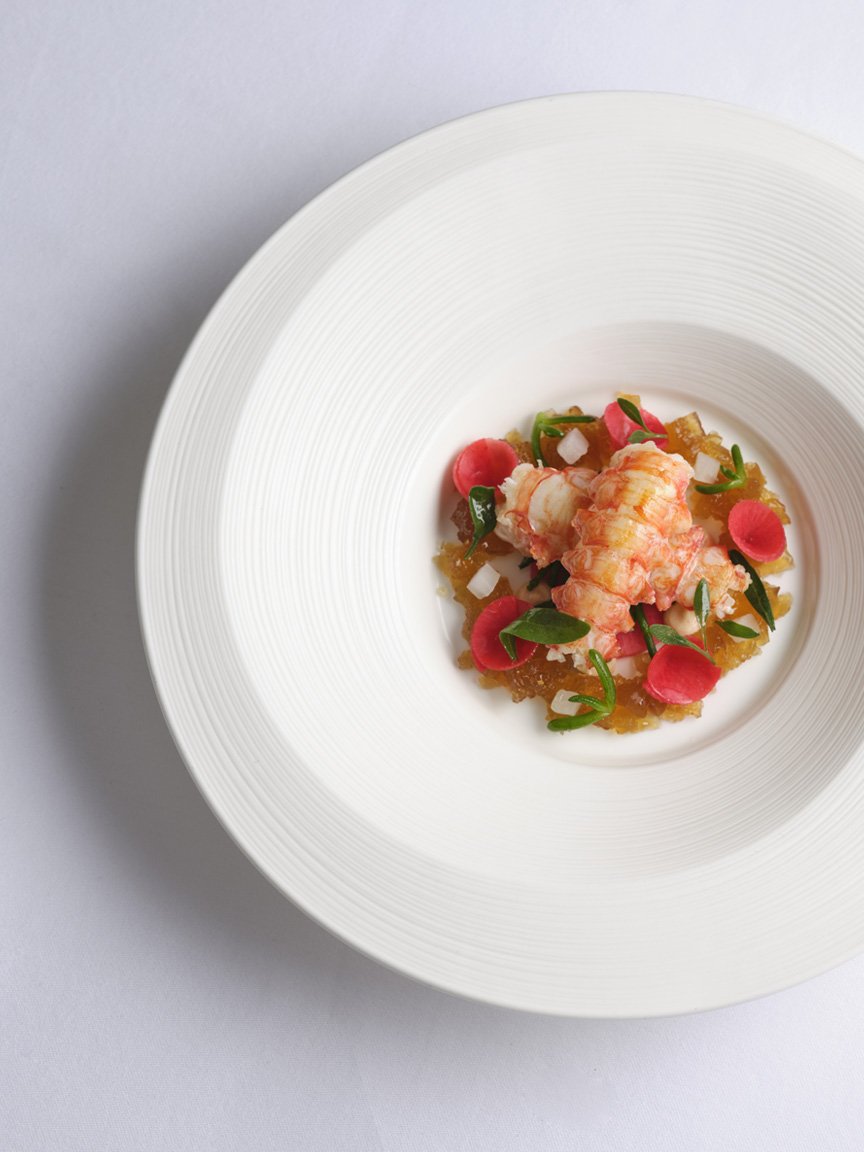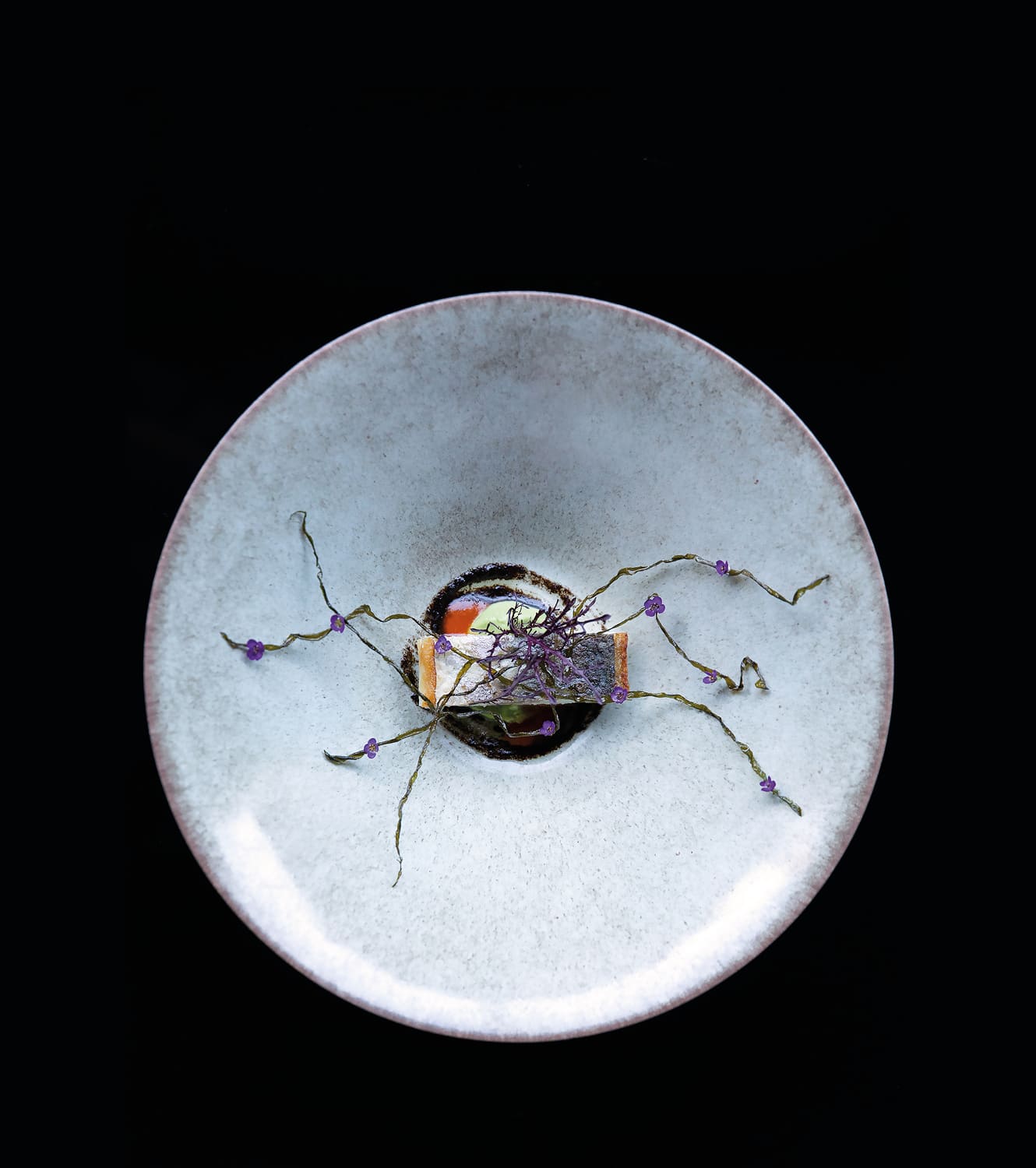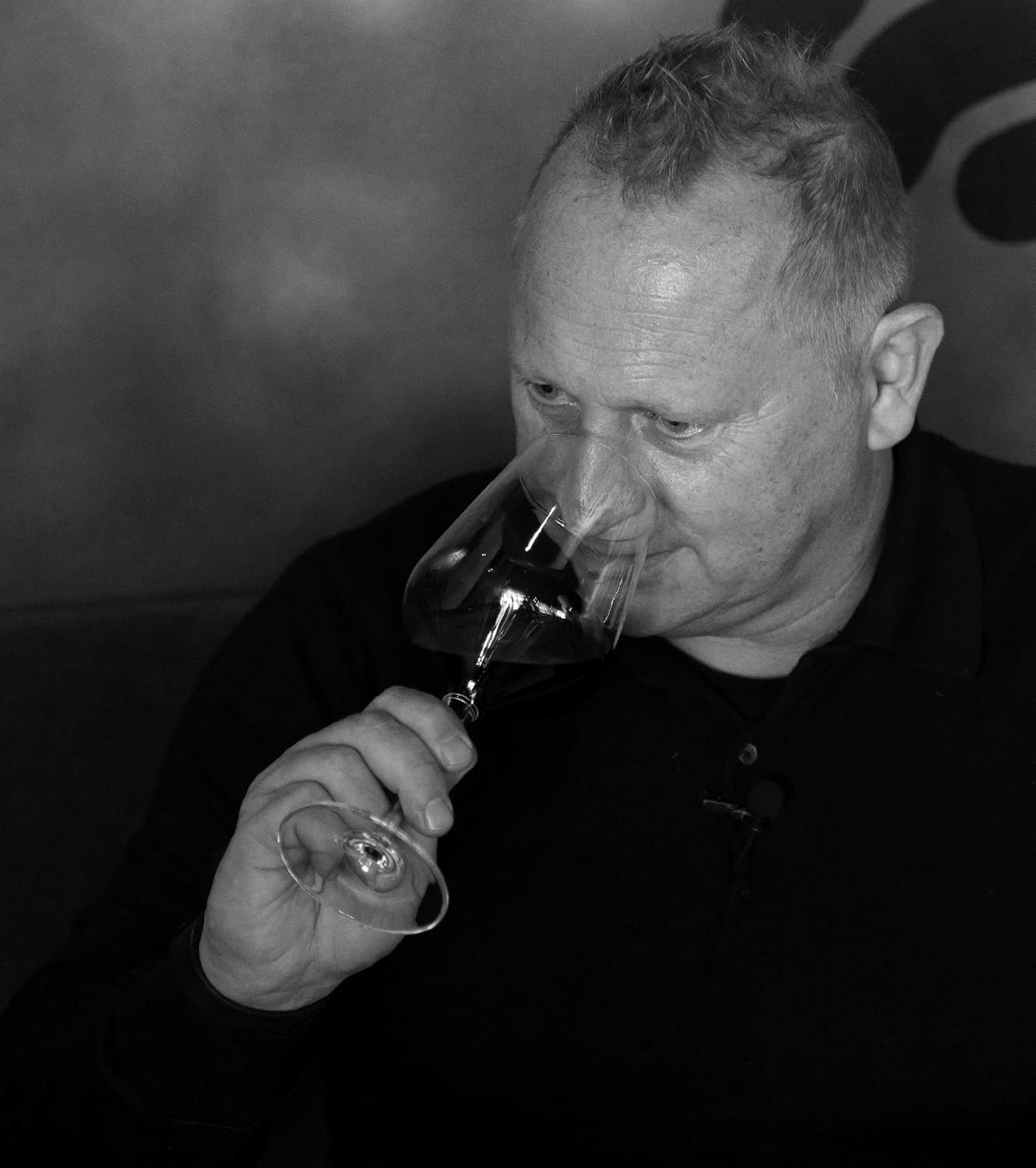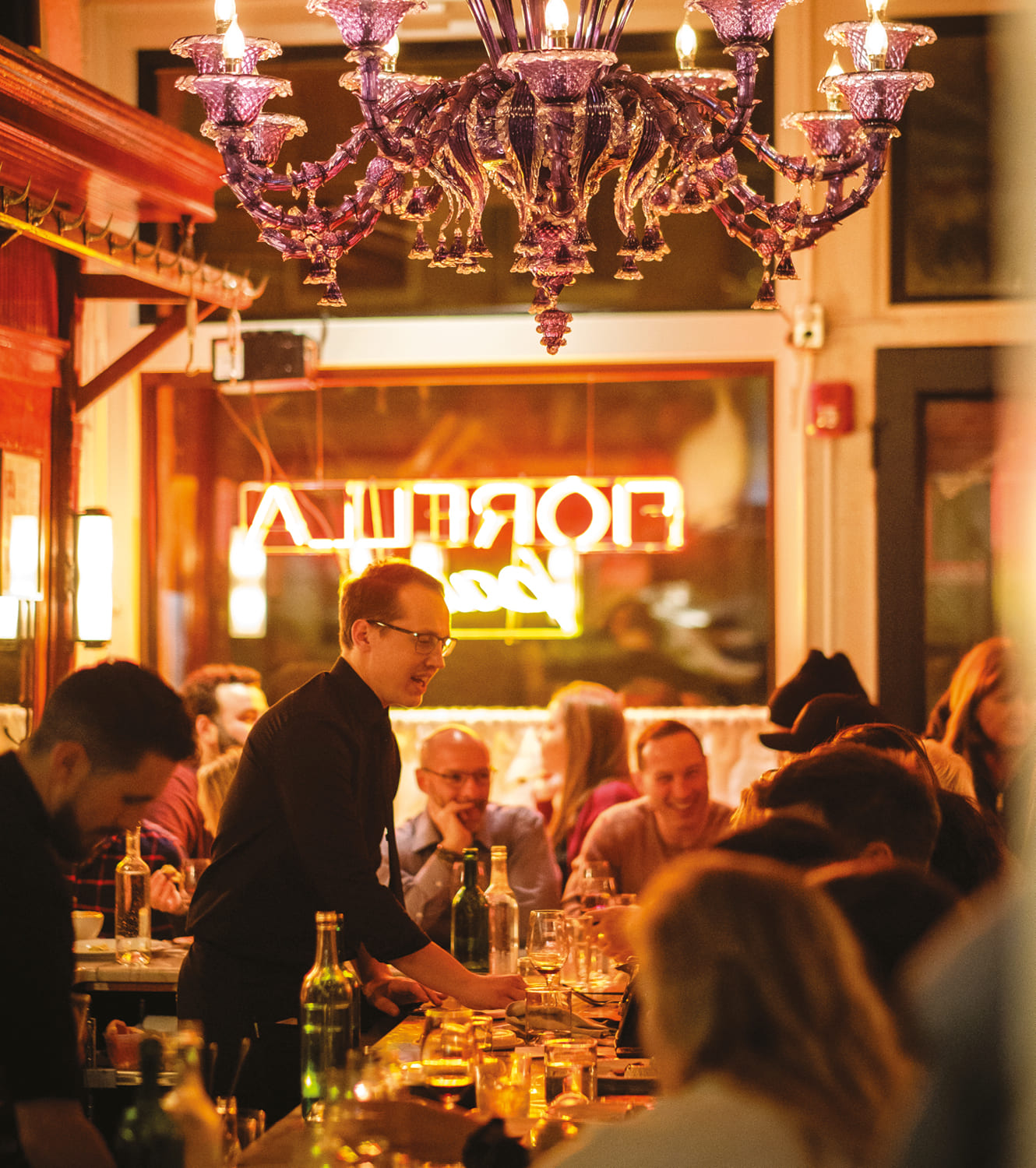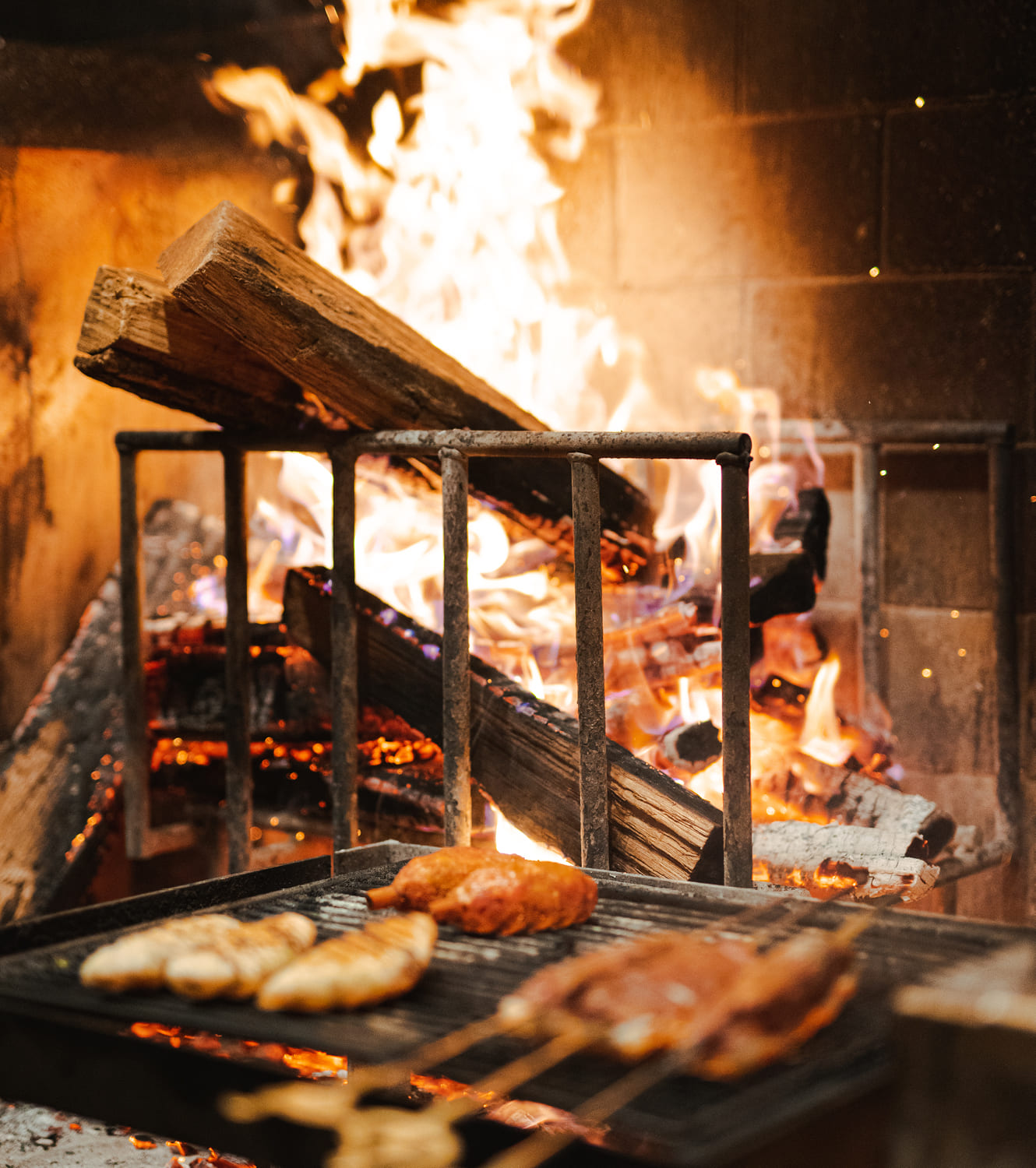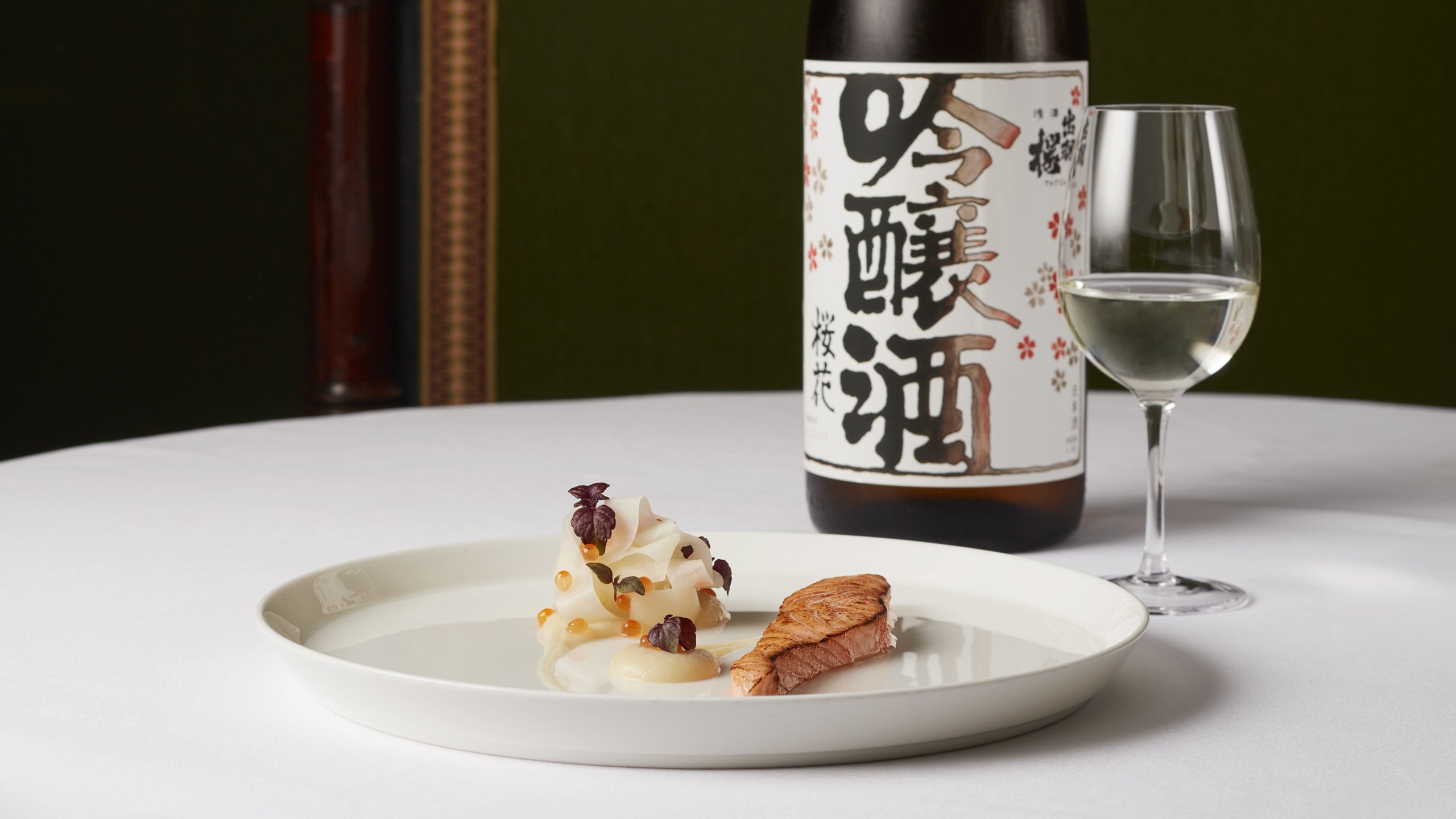
FRENCH CONNECTION
At Le Gavroche, Michelin-starred chef Michel Roux is exploring the potential of tasting fine French dining with a sip of sake. Nargess Banks heads to Mayfair to see how the two pair up
“It is a bit radical to have sake on a tasting menu in a classic French restaurant like Le Gavroche,” starts chef Michel Roux in a gently jokey tone as we meet at his two Michelin-star restaurant in the plush neighborhood of Mayfair in London. “But it’s gone down extremely well.” He emphasizes the “but” since a previous experiment over a decade ago in pairing sake with a tuna recipe hadn’t quite been such a joy, nor had one involving craft Belgian cherry beer which, although a critical success with restaurant reviewers and sommeliers, proved less popular with Le Gavroche diners.
He continues with a wry smile: “Maybe my timing was all wrong – it was too early and our guests weren’t ready for it. Fast-forward 12 years, and I cannot think of a single person here who’s objected to trying out the sake on our tasting menu.”
In recent years much has changed in the restaurant world. New generations tend to be more explorative and open to new ideas – and they are generally more informed about food and drink. “Back then the perception was you had to serve sake warm – that it’s a cheap drink. Now people understand that sake is worthy of being paired with practically any food. I think it’s a very sophisticated and beautiful drink.”
Saying that, Michel is quick to note that Le Gavroche is an iconic established destination that attracts a certain clientele who come here for a sense of occasion, and that although they are open to ideas, there are limits to what he can do. “You’ve also got one of the most interesting wine lists in the UK,” interrupts his daughter Emily Roux who has joined us for the interview. “One reason people come to Le Gavroche is to explore the wine menu.”
Things, she points out, are a little different at Caractère, the restaurant she opened west of the city in Notting Hill in 2018 with her husband, also a chef, Diego Ferrari. “We feature biodynamic and natural wines to our menu,” she says adding enthusiastically, “and our guests are always willing to try new things.”
Caractère categorizes its food according to character traits (hence the name) – curious, robust, subtle, delicate, strong. The exciting wine program echoes this sentiment and features (for the time) French, Italian and English wines. “We try to keep it exciting and about the sense of discovery,” she says, admitting that although sake is not yet served at Caractère, the goal is to expand the program to offer more diverse beverages from across the globe.
Meanwhile at Le Gavroche, Michel is well aware that the success of exploring drinks beyond fine wine hangs on his sommelier team in how they explain and explore these with diners. He says you cannot underestimate the knowledge and expertise that will transport the experience. “When they’re pouring the sake and explaining it to the guests, it brings a sense of confidence. They understand the theory behind our decisions.”
“Sake has a lovely, clean finish. Like wine, it is so complex – it’s never one-dimensional”
Dishes of torched Loch Duart salmon and grilled langoustine, both served with sake at Le Gavroche
French Class
Michel Roux’s life has been intimately linked with the evolution of fine dining. His father and uncle, Albert and Michel Roux Srs, brought haute cuisine to the UK, and were the first chefs outside of France to win three Michelin stars with Le Gavroche and The Waterside Inn.
At 16, Michel Jr set off for France on an apprenticeship with the master pâtissier Monsieur Hellegouarche. This followed a season at Le Gavroche, before returning to France to train under Alain Chapel, the chef at Mionnay largely credited with pioneering “nouvelle cuisine,” after which he returned to the UK and joined the Roux restaurants, including Le Gavroche, where he’s been head chef since 1991.
The introduction of sake to French fine dining feels part of a larger conversation on how our advancing palettes have become more open to change. I ask the chef how he would define the modern-day Le Gavroche. The question triggers a passionate response: “We stay true to our roots here and it’s the kind of food I enjoy cooking and eating. But rather than say it’s a classic French restaurant, I would say it’s based on classic French techniques. We’ve evolved through the years; any restaurant that doesn’t will die. You have to stay attuned to what’s going on without losing touch of where you’ve come from.”
The front-of-house service, for instance, may be a million miles away from where it was under his father’s reign, yet every element of Le Gavroche has been carefully appointed. Smiling, Michel recalls the past: “The style was so stiff and formal – waiting staff stood to attention and didn’t speak with guests, and male diners had to wear a jacket and tie. We dropped all that. I don’t want to eat in a place where you have to whisper so we encourage our staff to engage with our guests.”
Emily points out that her customers tend to follow the restaurant and the chefs on social media. So does she. “I follow so many chefs to see what they’re up to and to keep us on track. It helps us get inspired.” Michel says even his Le Gavroche customers are social media enthusiasts, admitting part of the experience will now involve the staff, the storytelling that connects diners with the restaurant. “It’s about being part of a community. Modern dining is so much about the overall experience,” he says.
Sake of Choice
Two sakes, both from the Dewazakura Shuzo brewery in Japan’s Yamagata prefecture, feature on the tasting menus at Le Gavroche. The Ginjo Oka and Ginjo Izumi Judan are paired with a dish of Loch Duart salmon, kohlrabi, miso purée, pickled ribbons and salmon caviar.
The recipe came first, then the sake. With its pickled kohlrabi and miso, the dish benefits from Asian flavors – “notes that you immediately associate with the cuisine that pair beautifully with sake,” says Michel.
Head sommelier Rémi Cousin further explains the pairings: “Both of these sakes are very refined, elegant and match the subtle texture of the dish. The Oka has a more fruit-driven character as well as being rounder. It highlights the sweetness within the dish, with kohlrabi and the softness of the salmon. The Izumi Judan is slightly drier so it lifts the freshness of the dish with the pickled ribbons and the caviar.”
Michel sees the two sakes also complementing another of his tasting dishes, the grilled langoustine with shellfish jelly, black radish and radish meat, and sea herbs, which is yet to be tried and tested.
Emily says the Roux family are all sake aficionados. “It’s a soft drink,” she offers, “and it doesn’t have the tannins, tartness or alcohol some younger red wines may have.” Michel adds, “and it has a lovely, clean finish. Some sakes can have a floral nose and palate and length that will stay with you a long, long time. Meanwhile others can be sharp and with high acidity. Like wine, sake is so complex. It’s never one-dimensional.”
Alternative dining options to explore thoughtfully pairing sake with non-Japanese food are State Bird Provisions in San Francisco and Soogil in New York.
PHOTOGRAPHY BY ©JODI HINDS
We recommend
EAST MEETS WEST
The versatility, acidity and delicacy of Old World wines can help bring out the best of traditional Japanese ingredients. Virginia Miller speaks to a panel of Michelin-starred chefs
A PERFECT BLEND
Chotto Matte specializes in Nikkei cuisine, a Peruvian and Japanese invention shaped by movement and migration. But how to pair with wine? Nargess Banks sits down with the founder, Kurt Zdesar, to explore
PHILADELPHIA STORY
Set in a former butcher shop in the melting pot that is South Philly, Fiorella is a temple to pasta and wine that celebrates both simplicity and authenticity. John Irwin pays a visit
SEE WHY ALBI’S SPIRITED WINE LIST COMPLEMENTS THE COMPLEX LEVANTINE CUISINE
At Albi, the heady atmosphere and complex Levantine dishes are matched by a cheeky wine program laced with obscure references to songs, books and films as David White discovers

